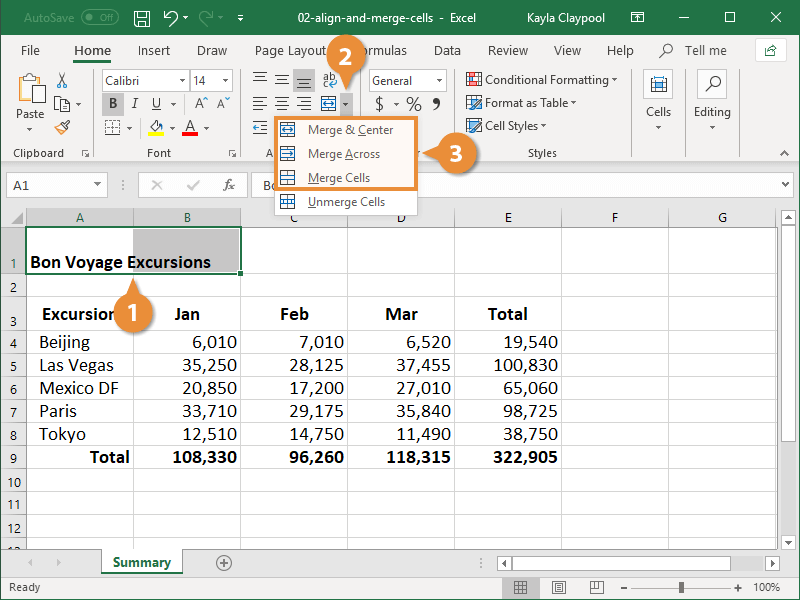Select the numbers you want to right indent. In the Alignment group, click the Increase Indent button once (or the number of levels you want to indent), then click the Right Align button. You can confirm in the Format Cells dialog box that the numbers are right aligned with one indent level. In Excel there are standard buttons on the menu - under Alignment - that increase or decrease the indent. You just click on it while you're in a cell and it does it. Can't find that in Sheets. Sheets, Chrome OS, Business. Upvote (129) Subscribe Unsubscribe. Author, teacher and talk show host Robert McMillen shows you how to indent cells in Microsoft Excel 2013.
- How To Increase Indent In Excel
- Excel Show Increase Or Decrease
- How To Increase Indent In Excel 2016
- How To Change Indent Spaces In Excel
- How To Reduce Indent In Excel
- How To Increase The Indent In Excel
In this article we will learn how to decrease and increase the text towards the cell border you can use “Indent” option in Microsoft Excel 2010. It is a part of “Format Cells”, in “Alignment” tab in “Text Alignment”. There are two types of Indent one is “Increase Indent” and second is “Decrease Indent”.
“Decrease Indent is used to move the content closer to the cell border”
How To Increase Indent In Excel
“Increase Indent is used to move the content further away from the cell border”
To understand Changing the Indentation in Microsoft Excel 2010/2013,let’s take an example and understand:-
Wrap Text by using the shortcut command
I have text in cell A1 to A12, to change the indentation in a cell follow the below mentioned steps:-
Step 1: Select the list of expenses below each division for example: select the cells A2:A6 (a group of expenses for Department 1).
Excel Show Increase Or Decrease
Step 2: Go to “Home” tab in the group of “Alignment” click on the “Increase Indent” icon on the formatting tool bar several times until you reach the desired indentation.
Step 3: To go back the position click on “Decrease Indent” icon on the formatting toolbar several times until you reach the desired indentation.
OR
Step 1: Select the range A2:A7 and Press the key “CTRL + 1”.
Step 2: Format Cells dialog boxwill appear, select the “Alignment” tab and in the Indent box change the number of characters to Indent.
Step 3: Select the Right (Indent) in Horizontal.
Step 4: Type 5 in indent.
Click on Ok.
There are two types of indents that can be adjusted: paragraphs and bullet points. Each has a separate way of adjusting the indent size. Below are the different ways you can adjust the indentation in Microsoft Word.
- First line indent with tab.
- Indent paragraph with shortcut key.
- Adjusting indents using the ruler.
- Changing indents in the Paragraph window.
- Adjust the indent on the Ribbon in Word 2007 and later.
- Adjusting the bullet and numbering indentation.
First line indent with tab
The first line indent can always be created using the Tab key on the keyboard. To change the first line indent size or indent the full paragraph, continue reading the below suggestions.
Indent paragraph with shortcut key
A complete paragraph can be indented with the keyboard shortcutCtrl+M and pressing the keyboard shortcut more than once will indent the paragraph further.
TipTo reverse the indent, you can also press Ctrl+Shift+M.
Adjusting indents using the ruler
To adjust a paragraph indent size, use the Ruler, which is below the menu bar and resembles the picture shown below. If this feature is not visible, see our document on how to enable the Ruler.
Towards the left side of the Ruler, look for indent markers that resemble an hourglass, like the image shown below.
The top marker (down arrow) controls the first line indent, and the middle marker (up arrow) controls the hanging indent (the indent for lines after the first line in each paragraph). The bottom marker (small box) controls the left indent. To adjust these indents, you can click-and-drag each marker to the right or left.
TipTo change the indentation for an entire document, select all text in the document (press Ctrl+A), then adjust the indent spacing in the ruler as detailed above.
NoteIf a large indent is created when pressing the Tab key and adjusting the indent on the Ruler doesn't work, adjust the Left Tab Stop in the Ruler.
Changing indents in the Paragraph window
Another way to adjust the indents is to view the Paragraph settings. To view this window, double-click the markers in the ruler, click Format and then Paragraph. You can also place the cursor in the paragraph, right-click with your mouse, and chose Paragraph.
As seen below in the Paragraph window, under the Indentation section, the left and right indent settings can be adjusted. You can also adjust the first line indent and hanging indent size under the Special option in the Indentation section.
At the bottom of the Paragraph settings window, you can preview the look of the indent sizes you are setting and make changes accordingly until you get it the way you want.
Adjust the indent on the Ribbon in Word 2007 and later
If you're using a newer version of Microsoft Word that uses the Ribbon, such as Word 2007 or 2013, do the following.
- Click the Layout or Page Layout tab.
- Adjust the indent settings in the Paragraph section.

How To Increase Indent In Excel 2016
To view the Paragraph window mentioned in the above section, click the small down arrow indicated by the red arrow in the picture below.
Adjusting the bullet and numbering indentation
TipThe easiest method of adjusting the bullets and number list in all versions of Word is to adjust the left indent through the Microsoft Word ruler bar.
 Note
NoteTo adjust the spacing between the bullet and the text in a list, you may need to adjust the Left Tab Stop in the Ruler.
Microsoft Word 2007, 2010, and later
- Click on one of the bullets at the level you want to change in the document.
- Right-click the bullet and select Adjust List Indents in the pop-up menu.
- In the Adjust List Indents window, change the Bullet position to adjust the bullet indent size or change the Text indent to adjust the text indent size after a bullet.
Microsoft Word 2000 and earlier
How To Change Indent Spaces In Excel
- Place your cursor in a bulleted or numbered line in the document.
- Click the Format menu at the top of the Word program and select the Bullets and Numbering option.
- In the Bullets and Numbering window, click the Customize button on one of the first three tabs, depending on the type of list you are changing.
- In the window that opens, adjust the indent size for the bullet position and the text position. At the bottom of the window, you can preview how the indentation sizing looks and make changes accordingly until you get it the way you want.
You can also access the Bullet and Numbering window by placing your text cursor on a bulleted or numbered line and right-clicking in the Word document. In the pop-up menu, select the Bullets and Numbering option.
How To Reduce Indent In Excel
Additional information
How To Increase The Indent In Excel
- See our bullet and indent definitions for related information and links.